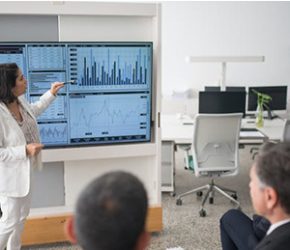
Good leaders know the importance of being present and listening well. Over the past year, these attributes have been further challenged since we haven’t been face-to-face. And the big change came when most conversations and meetings morphed into video.
We talk of “Zoom fatigue” as a general term applying to all video encounters. This is a real syndrome and it has multiple facets. For one thing, we’re staring at others on screen, which is looking at pixels which becoming tiring. It’s also not “normal” to be looking at everyone – and yourself – all the time, which would not be happening if we were in person or on a teleconference.
Professor Jeremy Bailenson, founding director of the Stanford Virtual Human Interaction Lab, examined the impact of spending hours each day on video platforms. He recently published the first peer-reviewed article on the topic, and an excellent summary is found in the Stanford News.
Bailenson comments that we have a higher cognitive load when we’re speaking on a video conference. In addition to focusing on what we are saying, we’re also making sure that we stay in frame and exaggerate gestures when you agree with others because a slight nod of the head may not be picked up easily by others.
He and colleagues have created the Zoom Exhaustion & Fatigue Scale, or ZEF Scale, to help measure how fatigued people get from videoconferencing. In fact, if you’re interested, feel free to participate in their survey, where you will receive a ZEF score. It takes about 10 minutes and very interesting to see your results (I learned that I’m in the 55th percentile for Zoom fatigue).
The upshot of this is that yes, Zoom fatigue is real, and yes, we need to be more alert and attentive when we are doing a lot of video conferencing. But there are ways to manage it. I would have guessed that my ZEF score would be been higher, so I guess I’m adapting!





